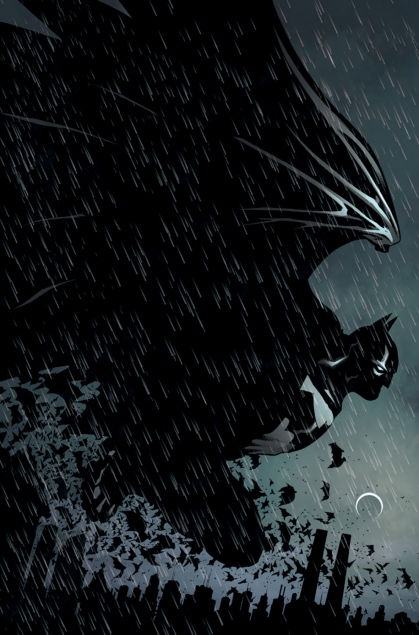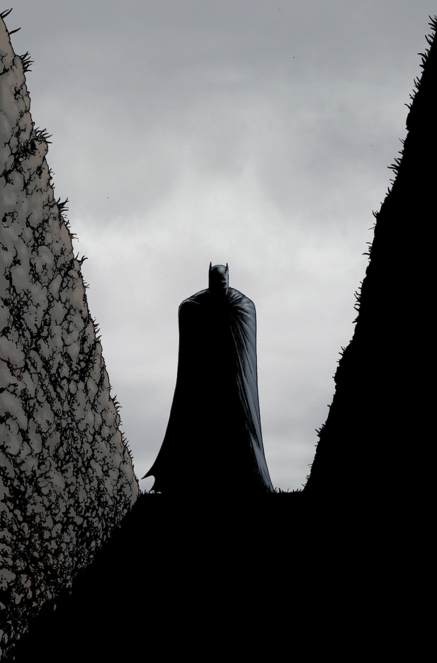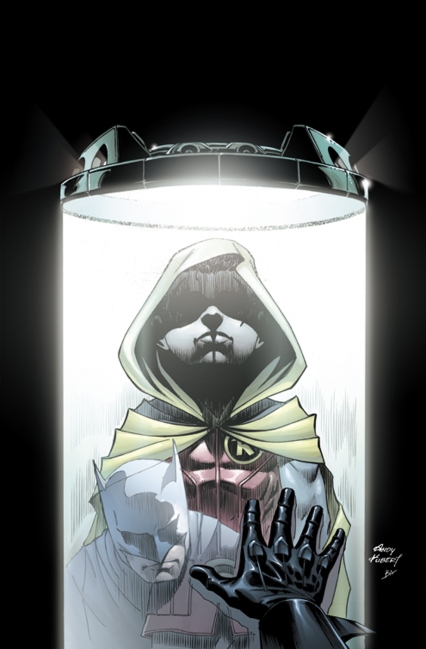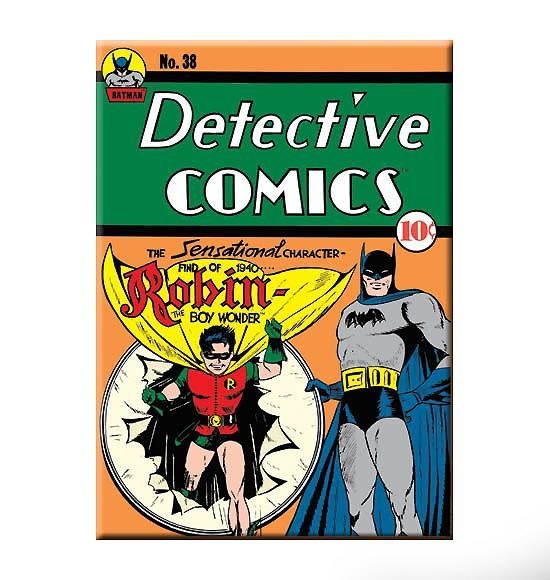
Robin's First Appearance
Introduced a short time after Batman exploded on the comic book page, Robin the Boy Wonder was once a wildly popular character, someone that the young reader could identify with. Since comics had grown in popularity among soldiers in the field during WWII, readership included an older demographic but after wartime youngsters were becoming interested. An older bachelor fighting crime from atop a mansion was too far removed for a kid, so someone closer to the background of a feisty (yet respectful) boy was introduced. It created an atmosphere of comraderie and lightened the Batman's somber attitude.
With a partner, Batman had someone to talk to, creating new possibilities for the creative team and more options for the reader. But... some say that Batman works better alone as a dark vigilante and that a brightly colored kid in pixie boots ruins his spectre of the night credibility.
When the decision was made to allow Dick Grayson to wear pants and leave the Batcave, it left a void alongside the caped crusader and started a trend of replacement Robins that has lasted to this day. There have been many Robins over the decades and (in most cases) each one has grown into his/her own characters. This week, the latest Robin Damian Wayne met his grisly end, a story that has had the media abuzz and many non-comic fans confused. Which Robin died? And what does it mean?

Four Robins: Dick Grayson, Jason Todd, Tim Drake and Damian Wayne
For myself, the most popular of the Robins isn't just Dick Grayson, but Dick Grayson as played by Burt Ward in the 1966 TV series. An absurd vision of comic book sensibilities, comedy and mock-drama, the TV Robin spoke in the weirdest diction and seemed to view plots against the free world as seriously dangerous as jaywalking. In a state of constant surprise and bewilderment, it seemed that Ward had a live wire running through him, keeping his performance energized at all times.

Burt Ward, Robin on TV in 1966
The 1960's comic book followed suit and replicated this version of Batman and Robin to an extent, but grew tired of it in time and developed a more sophisticated take on the dynamic duo; moving Dick into college and Bruce into a Gotham City penthouse. Robin earned a strong following, became an astute detective, a companion to Batgirl and even the leader of a group of former sidekicks, the Teen Titans. Robin was outgrowing his nest and becoming a man. In this way, he mirrored the maturing demographic of the readers who were becoming accustomed to more many-faceted characters.
This clever, youthful and resourceful version of Robin has populated the modern animated world in cartoons such as The Batman, Teen Titans and Young Justice. Not a junior version of Batman, Robin is brilliant and shrewd but not tragically bent toward vengeance and revenge. He is driven toward perfection, perhaps a reflection of is training on the trapeze. He also relied on a his own set of gadgets and weaponry, including fighting sticks and a staff, cribbed from Grayson's time as Nightwing and the second Robin, Jason Todd.
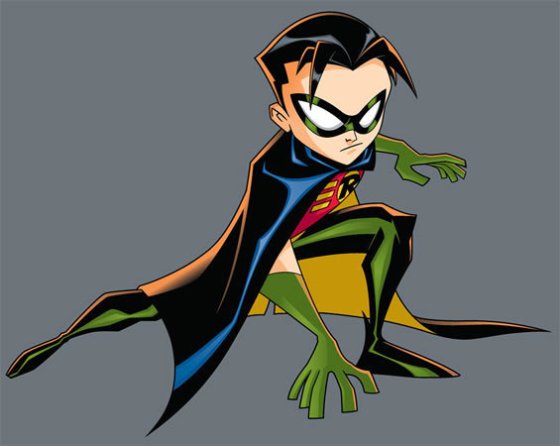
An animated version of Robin
In the 1980's, it was decided that a new Robin was needed and a kind of ersatz Dick Grayson named Jason Todd was the solution. This didn't sit well with readers and when the opportunity arose to revamp the character with a new origin in 1985, he became a street punk caught trying to rob the Batmobile. This new Jason Todd was a devil-may-care hooligan with an edge that would appeal to the rebellious 80's teen reader.
However, there was backlash against this new Robin. He was different from Grayson, but so anti-establishment that he challenged readers to accept him. Finally it was decided to make a bold move that would challenge the working relationship between Batman and Robin. Jason's long-lost mother was discovered which split Todd from his mentor in a mad search for her. When he found her, he also found the Joker and was beaten to pulp with a crowbar before being blown to pieces by an explosion.
Batman was too late to save his young ward, too late to rescue him from what might have been his fateful end.
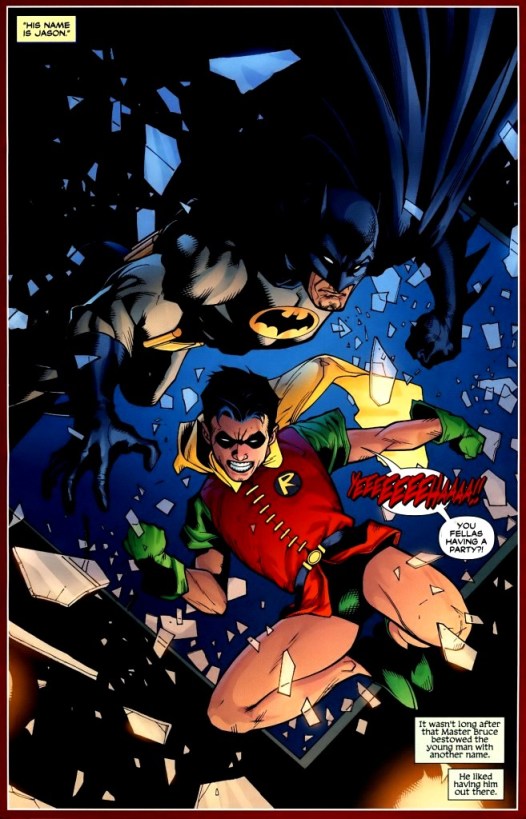
More recently, a third Robin was created, Tim Drake. Rather than having Drake be someone who stumbled into Batman's life, Drake forced his way in through study, training, and deep research. The most intelligent of the Robins, Drake became a runaway hit and enjoyed a long-lasting solo series along with a place among the Teen Titans (called Young Justice). He has gradually moved away from his role as Robin as he can see the shadow of the Batman as something that could envelope him. Instead he has become his own person, much as Grayson had before him. Renamed Red Robin (no relation to the restaurant chain), Drake is a member of another version of the Teen Titans.
In many ways, Drake was a step back toward the more traditional Grayson-Robin and a mirror to the reader. But some tweaking in his fighting style and costume made him 100 times more modern and cooler than his predecessor. He was also far more cunning and resourceful than the others, leaving his mark as possibly one of the best Robins of all. In print, his solo adventures were extremely popular (thanks in no small part to Chuck Dixon who wrote Batman, Birds of Prey, Nightwing and Robin).
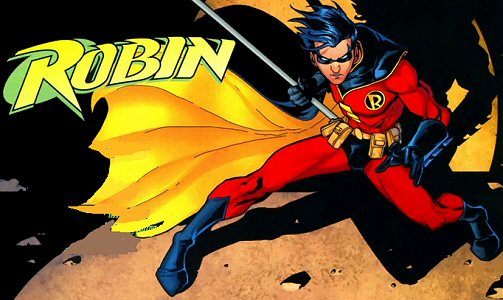
Tim Drake, Robin
When Drake split from Batman, his teenage girlfriend and daughter of the villainous Cluemaster was graduated into the red/green outfit. Stephanie Brown was Robin so briefly before dying that she barely gets any recognition in the comic, let alone a monument in the Batcave. Because of the restarts and revisions of DC timelines, Stephanie's death has been undone, but her role in the Batverse is nebulous, making her yet another member of the costumed crime fighting Bat-family rather than having her own persona. It's a shame because Brown was very popular as Spoiler and a female Robin is a great visual (as had been seen in Frank Miller's Dark Knight series).
The fact that she briefly appeared in Batman Incorporated (since said to be set in the recent past) but in no other DC Comic is something of a puzzler (no pun intended) and I have to wonder if DC is thinking of bringing her back as Robin given that there is now an opening.
The role of Robin quickly became that of a conscience for the dark knight, a reality check in the form of a fragile young hero daring danger in a brightly colored outfit while the hero lurked in the shadows.
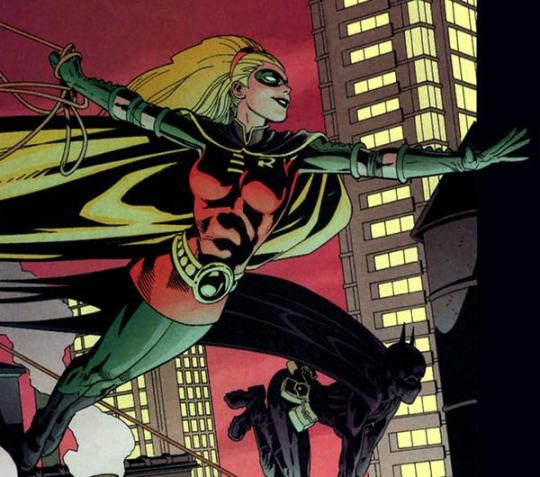
Stephanie Brown, the 'forgotten' Robin
In other modern media, Robin has been a more risky undertaking. Director Tim Burton had modernized and darkened the image of the caped crusader, making the introduction of a colorful sidekick an absurdity (though storyboards of Robin's intro in the 1989 film exist and a Robin action figure was released for Batman Returns using a passing likeness to Marlon Wayans who was almost cast in the part). Michael Keaton's tortured and brooding figure just did not gel with the notion of a spritely companion.
But after Burton was off the Batman films, all that changed and Chris O'Donnell played the 'boy' wonder in Batman Forever and Batman and Robin. The actor was clearly too old to play the traditional part of youthful acrobat, making his 'adoption' by a man not even a decade older than him appear strange at best. But I do have to say that in my opinion, O'Donnell did a serviceable job in the role, even with the dreadful material he had to work with. Against Kilmer and Clooney, O'Donnell served the purpose of being a sounding board, giving the films a little more diversity and the audience members another inlet to the story... in theory, anyway. In practice he was another action figure for the 'toyetic' franchise designed to sell tie-in merchandise.
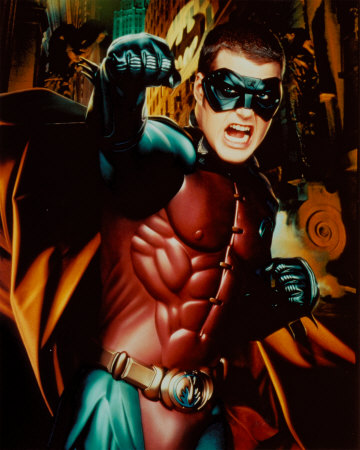
Chris O'Donnell played Robin on the big screen in two films
In 1987, Batman and Talia (daughter of the arch foe Ra's Al Ghul) had a child. Ra's Al Ghul had been hoping that Batman would take up his mantle as ruler of the world, rescuing it from its own excesses, but when the two failed to come to an agreement, another avenue presented itself. If not Bruce Wayne, then his child would be the ideal replacement. In 2006, Damian Wayne was introduced into the Batman universe. A smart-mouthed reckless punk, he grew intp the perfect 21st century version of Robin.
When Bruce Wayne died (twice, so it would seem) and was dispersed through time, Dick Grayson became Batman in his mentor's stead and also inherited the troublesome youth, Damian, as his sidekick. The two resented each other but in time found a kind of equal footing. Even in his final moments, Damian remarked that they were a great team. The new Robin was a reactionary, a dark shadow on the legacy of Batman. Not just a protege, Damian was the once and future Batman, and as he continually pointed out to Grayson, Todd and Drake, he was the only real Robin due to his blood relation while they were pretenders.

Batman reborn (Dick Grayson) and Robin (Damian)
When Grant Morrison started his long journey as the writer of Batman, he offered readers a vision of a possible hell-on-Earth future Gotham City in which Damian Wayne continued his father's war on crime. That will of course never happen now that Damian has died, but it was interesting nonetheless to see the protege use a fusion of his father's teaching and the brutal tactics of the League of Shadows in order to defeat the enemies of his city.
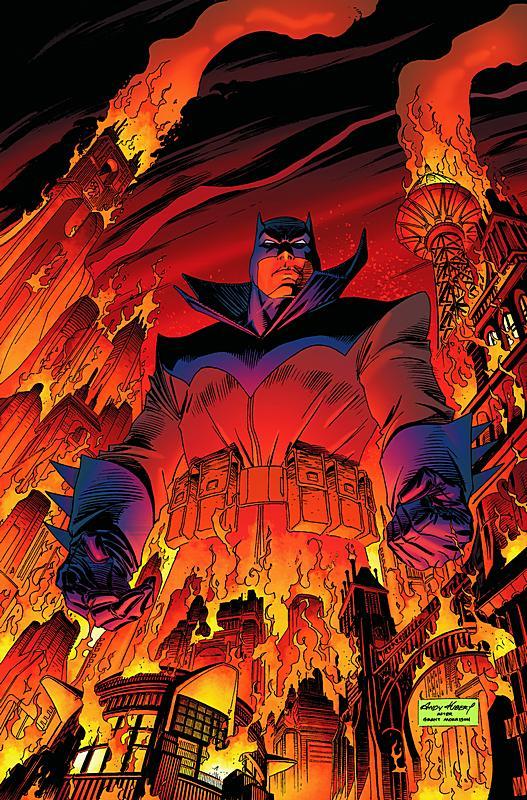
Batman of the dark future (Damian Wayne)
There have been many deaths in comic books and they are generally regarded as temporary since heroes seem to not so much go toward a graceful end but more through a revolving door that sees them come back in short order. One such instance is the death of Jason Todd, the successor to Dick Grayson. Todd was reckless and headstrong which led to his predicament at the hands of the Joker where not Batman but the readers themselves were granted the privilege of saving the youth. At a cost per call, Todd was voted out of the series and into oblivion.
Many years later, Jason Todd resurfaced as 'The Red Hood,' a tough and ruthless vigilante using any means necessary to defeat his enemies. One of the few deaths in comics that stood the test of time, bringing Todd back to life always struck me as cheap at worst and awkward at best. As a Robin, Todd was an interesting reaction to Grayson's straight-laced hero. As a dead Robin, Todd served as a harsh reminder of the consequences of Batman's war on crime. As far as I can see, he serves no real purpose in the current DCU other than a leather-jacketed bad-ass.
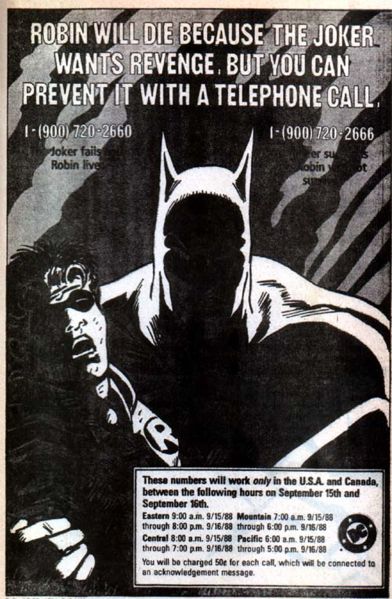
Jason Todd's death by election in Batman: A Death in the Family
So, just what is the point of Robin, anyway? And why is his death 'important'?
There is a valid opinion that Batman works better alone and that Robin is an antiquated idea from a simpler age when youngsters were the target audience. However there have been so many different and successful approaches to the character of the dark knight's sidekick that I think those naysayers are merely lacking the proper exposure to the character.
Over the following weeks, the Batman monthly books will be paying homage to the death of Damian Wayne in an interlinked series of covers bearing the legend 'Requiem' adding the stylized R from Robin's tunic. It is expected that Batman will not be a loner for long, leading some to to wonder if a previous Robin will once more take up the mantle or if a new acrobatic orphan will be donning the red and green togs.

